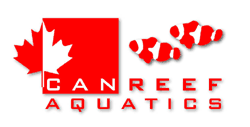
 |
|
#6
|
|||||
|
|||||
|
Quote:
Marine ich is only related to freshwater ich in that they're both protozoans. Beyond that there's no relation, with a most recent common ancestor likely measured in the hundreds of millions of years BP. It looks like you're doing research though, which is good, so I'd advise to re-focus on C. irritans, as if you follow any of the advice for I. multifiliis, you'll experience at best no results, or at worse a total tank melt down - for example, raising the temperature in a reef is a potentially fatal course of action. It's also completely ineffective against C. irritans, but standard procedure for I. multifiliis. Also, there isn't a cleaning organism that can be considered an effective control method for marine ich. As others mentioned, the actual parasite is burrowed underneath the skin of the fish, the white spots you see are like little pimples - they're the fish's immune response to the infestation. A cleaner organism might pick at them, but they're not actually eating the parasite, and they won't contribute to its control in a tank in any meaningful way. If you do see a reduction in the number of spots in a few days, the chances are overwhelmingly likely that the wrasse had nothing to do with it, and that you're just witnessing the normal ebb and flow of the visible stage of a highly cyclic parasite. |